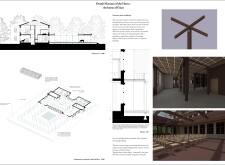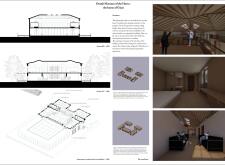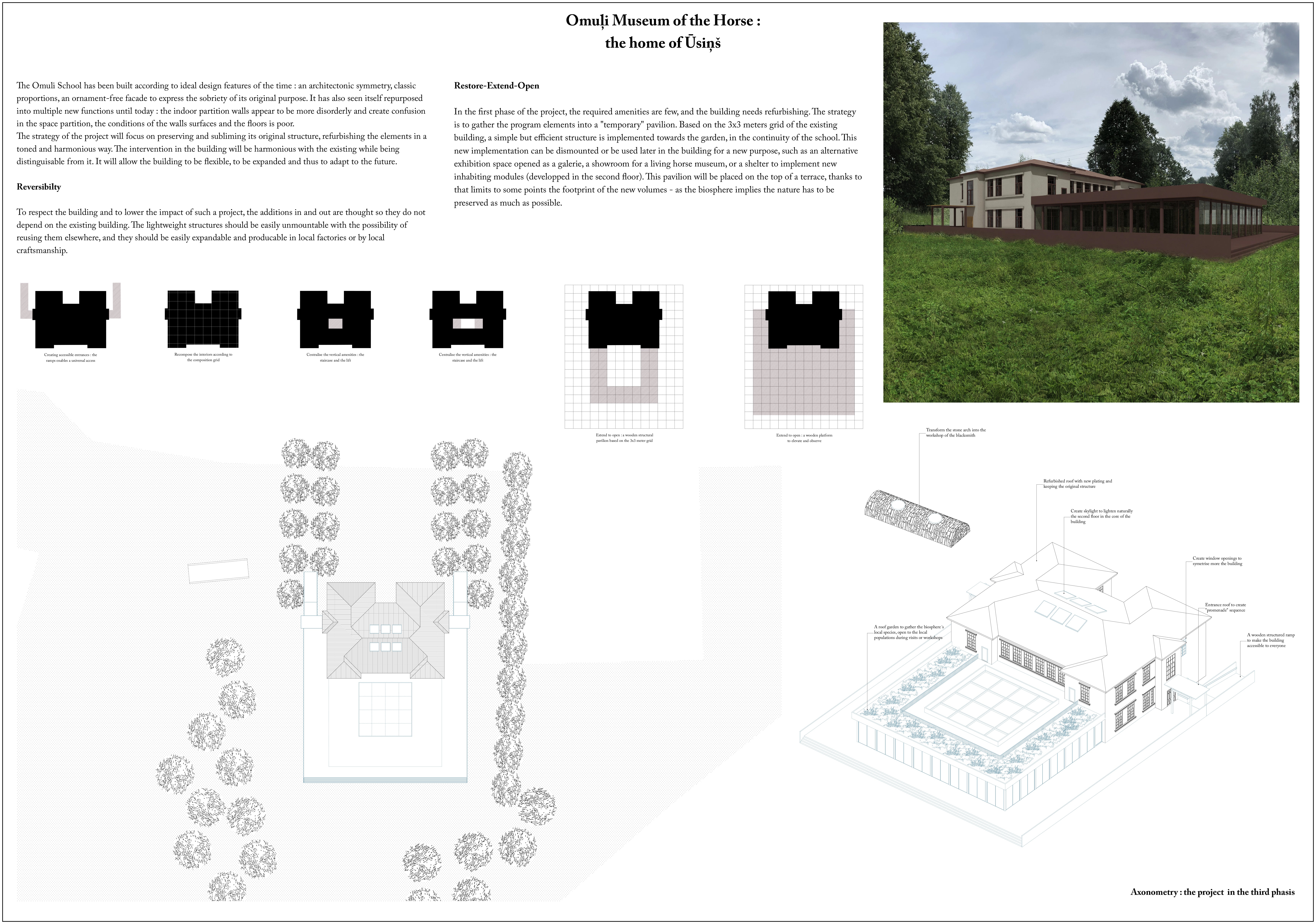5 key facts about this project
The Omuli Museum of the Horse is located in a region that celebrates local culture and craftsmanship. It serves as a space for exhibitions centered on equine heritage while also providing living accommodations for the groundskeeper. The design emphasizes a clear organization of spaces, separating public areas from private ones, and strengthens the link to the surrounding natural environment.
Design Concept
The overall design focuses on clearly defined spaces that encourage both community interaction and personal reflection. The extension reaching out to the garden connects the museum to the landscape, enhancing the experience for visitors while reserving the second floor for private living. This thoughtful arrangement not only clarifies the intended functions but also deepens the museum’s ties to the history of the area.
Materiality
A consistent identity emerges through the selected materials. The original building features dark, warm colors and oiled wood paneling, creating a welcoming atmosphere. The new structure will incorporate burgundy or dark red stained wood, ensuring compatibility with its surroundings. Waterproof wood paneling will be used for both the facade and floors, which contributes to a peaceful environment suited for the museum’s mission.
Flexibility and Functionality
Adaptability is a notable feature of the design. The spaces follow a 3x3 meter grid layout that allows for various configurations, supporting different uses over time. This modular approach enables the area to serve multiple purposes, from exhibitions to workshops and living spaces. The lightweight, self-carrying structure minimizes disruption to the existing building while supporting exhibition elements effectively.
Integration of Craftsmanship
Restoration of a small stone curve hut is planned as part of the project, to be used as a blacksmith’s workshop. This area will function as a practical space for craftsmen and offer educational opportunities for visitors to connect with traditional practices. The inclusion of open circular skylights will provide natural light and air circulation, underlining the focus on hands-on craftwork.
The Omuli Museum of the Horse not only shares the story of regional equine culture but also offers an ongoing connection to local craftsmanship. Through this design, the museum fosters engagement with the community and keeps history alive in meaningful ways.






















































